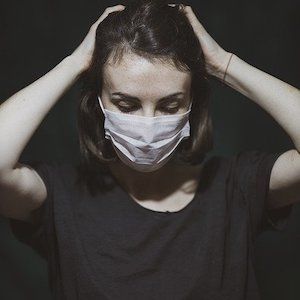Article
Study Finds Low Stress Levels in Mental Health Workers During COVID-19 Pandemic
Author(s):
New data show mental health workers experienced lower levels of traumatic stress and peritraumatic distress during COVID-19 pandemic, compared to healthcare workers and general population.

The COVID-19 pandemic has resulted in elevated levels of psychological stress, particularly in healthcare workers, such as physicians and nurses.
New research examined the psychological reaction of mental health professionals in response to the COVID-19 pandemic, studying levels of traumatic stress and peritraumatic distress.
Investigators, led by Connie Guo of the Douglas Mental Health University Institute, found that mental health workers experienced lower levels of traumatic stress and peritraumatic stress compared to the general population, while healthcare workers experienced similar levels of stress.
These new findings were presented this weekend at the 2021 American Psychiatric Association Annual Meeting.
Study
The team used data from a cross-sectional international survey to examine the levels of traumatic stress and peritraumatic distress experienced by healthcare workers during the pandemic.
They hypothesized a higher level of event-related traumatic stress and peritraumatic distress in mental health workers and healthcare professionals compared to the general population.
The data was collected between April – May 2020 and included 5913 adults residing in Canada, France, Italy, United States, and China using a web-based survey.
Of the responses, 690 participants were mental health professionals, 405 participants were healthcare workers, and 4818 worked outside of the healthcare profession.
Investigators measured peritraumatic distress with the 13-item Peritraumatic Distress Inventory (PDI), including helplessness, sadness, guilt. The cut off score ≥13 indicated clinical significance for the team.
The team measured event-related traumatic stress symptoms with the 6-item Impact of Event Scale (IE-6), including intrusions, avoidance, hyperarousal. The cut off score ≥10 indicated clinical significance.
Results
According to the data, mental health professionals scored lower on the PDI (mean, 12.81; SD, 8.76) than the general population (mean, 18.16; SD, 10.63) and healthcare workers (mean, 18.51; SD, 10.59).
Investigators found a significant statistical difference of F (2, 5618) = 80.883, p < .001, η2p = .024.
Investigators also found mental health professionals had significantly lower statistics of IES-6 (mean, 8.85; SD, 5.45) compared to both the general population (mean, 11.50; SD, 5.58) and healthcare workers (mean, 11.58; SD, 5.85).
A significant statistical difference of F (2, 5618) = 60.840, p < .001, η2p = .023 was found.
However, investigators found no significant differences between healthcare professionals and the general population, in both the PDI and IES-6.
Investigators found that healthcare workers reported similar levels of stress as the general population in both categories. The mean for each group was above the clinical cut-off.
They noted previous studies may underestimate the levels of stress in the general population, particularly in levels of traumatic stress.
Conclusion
Investigators noted that the results of mental health professionals stress levels were contrary to their hypothesis.
Mental health workers experienced lower stress levels in both peritraumatic distress and event-related stress symptoms, compared to both the general population and other healthcare workers.
“Mental health professionals may be better equipped to adjust psychologically to the demands of the pandemic, particularly at its early stages,” investigators wrote.
The team concluded that traumatic stress associated with mental health workers may worsen in the future and further research on trauma and stress levels in the population is needed.
The study, “Comparison of Trauma and Stress Levels Among Mental Health Professionals, Healthcare Workers, and the General Public During the Covid-19 Pandemic,” was presented by the American Psychiatric Association.




